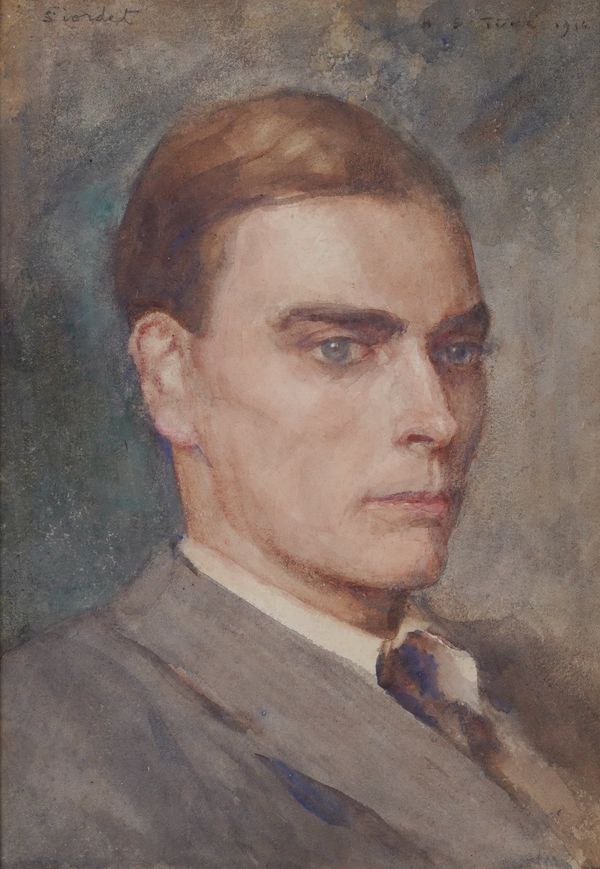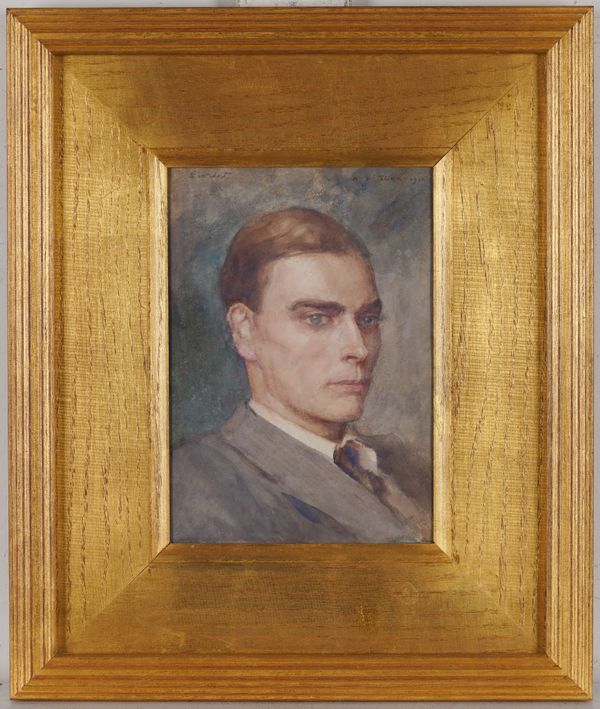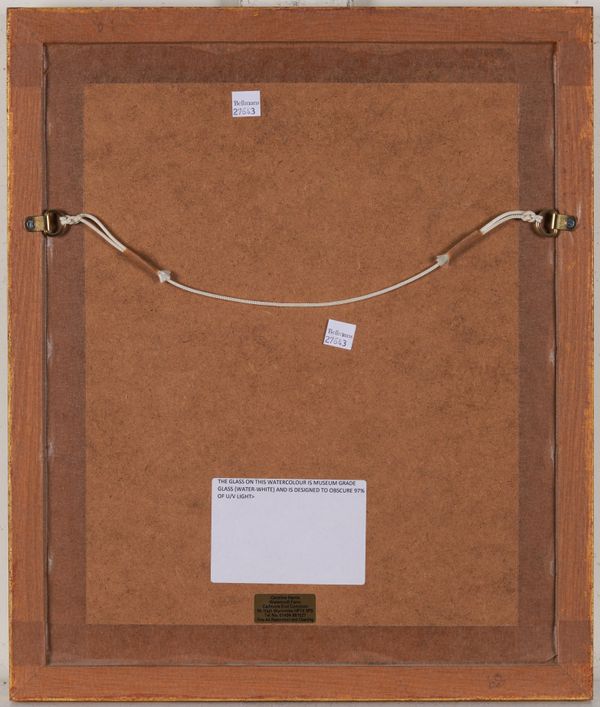Buyers Premium 25% + Vat
HENRY SCOTT TUKE (BRITISH, 1858-1929)
Portrait of Gerald Caldwell Siordet MC (1885-1917)
signed and dated ‘H.S. TUKE 1914’ (upper right), inscribed ‘Siordet’ (upper left)
watercolour
24 x 17cm
Provenance
The artist’s niece; thence by family descent;
Sale, Bonhams, Oxford, 16th November 2011, (part) lot 98, where acquired by the present owner
| Estimate: | £1,500 - £2,500 |
| Hammer price: | £3,800 |
Footnote
Siordet
hailed from prominent Huguenot family who originated in the Vers region of
France, near Geneva, before settling in London.
Gerald was educated at Clifton college, where he won numerous Royal
Drawing Society medals, before being awarded a scholarship to read Classics at
Balliol College, Oxford. Whilst at
Oxford, he met fellow aspiring artist Brian Hatton (1887-1916) who studied at
Trinity and painted Siordet’s portrait on a number of occasions. Having come down from Oxford, Siordet and
Hatton shared a studio, known as The Bronze Door, on Cathcart Road in South
Kensington. As well as Tuke, their
artistic circle included Glyn Philpot, Gerald Spencer Pryce, the illustrator
Henry Justice Ford and John Singer Sargent who drew a superb portrait of Siordet.
Siordet worked with the New English Art Club and it is likely that it was there
that he met Tuke. He also worked for a
number of other artistic Institutions including the Medici Society, the
Victoria & Albert museum, where he catalogued the collection of ivory
carvings; he also wrote a number of artistic critiques for The Studio magazine.
Siordet was working for the Fine Art Society
when was war was declared in August 1914.
He joined as a private soldier but in 1915 was promoted to 2nd
Lieutenant, the 13th Rifle Brigade.
On 1st July, stationed near the village of
Pozieres, during the Battle of the Somme, Siordet was awarded the Military
Cross ‘For conspicuous gallantry during an attack.’ in January 1917, having recovered from a
wound suffered during the Somme, Siordet was sent to Mesopotamia with the 6th
King’s Own Lancaster Regiment and, on 9th February, was killed
whilst leading a successful attack on a Turkish position near Kut-al-Amara on
the left bank of the Tigris River. His
body was never recovered but his name is recorded on the Basra memorial, Iraq,
The WWI memorial at Balliol, as well as the V&A memorial designed by Eric
Gill.
Siordet left behind a sketchbook of works from the Western Front described in
the Cliftonian in March 1919 as ‘…extraordinarily vivid. They are done with a few, sure, light lines,
evidences of technical knowledge and highly trained skill.’ The same article described his poetry as,
‘The theme…of passionate friendship, united with passionate love of England and
passionate faith in England’s cause, and her right to claim his utmost devotion.’ Such praise is justified and illustrated in
just a few lines from his poem ‘To the Dead’
‘So may I turn me in and by some sweet
Remembered pathway find you once again.
Then we can walk together, I with you.
Or you, or you, along some quiet road.
And talk the foolish, old, forgivable talk.
And laugh together; you will turn your head,
Look as you used to look, speak as you spoke,
My friend to me, and I your friend to you.’
Following Siordet’s death Glyn Philpot arranged for a volume of his poetry
and drawings to be published privately for his sister Vera. Another obituary described him as a ‘…man
with very mature judgement, with great knowledge, very definite opinions on all
questions of taste, whether literary or artistic, and an acute critical sense,
combined with great warmth of heart and no little wit, he was beloved by older
and younger alike.’
Condition Report
The sheet is sound; scattered media spots to background, otherwise good original condition with strong colour; framed and under glass, unexamined out of frame.


